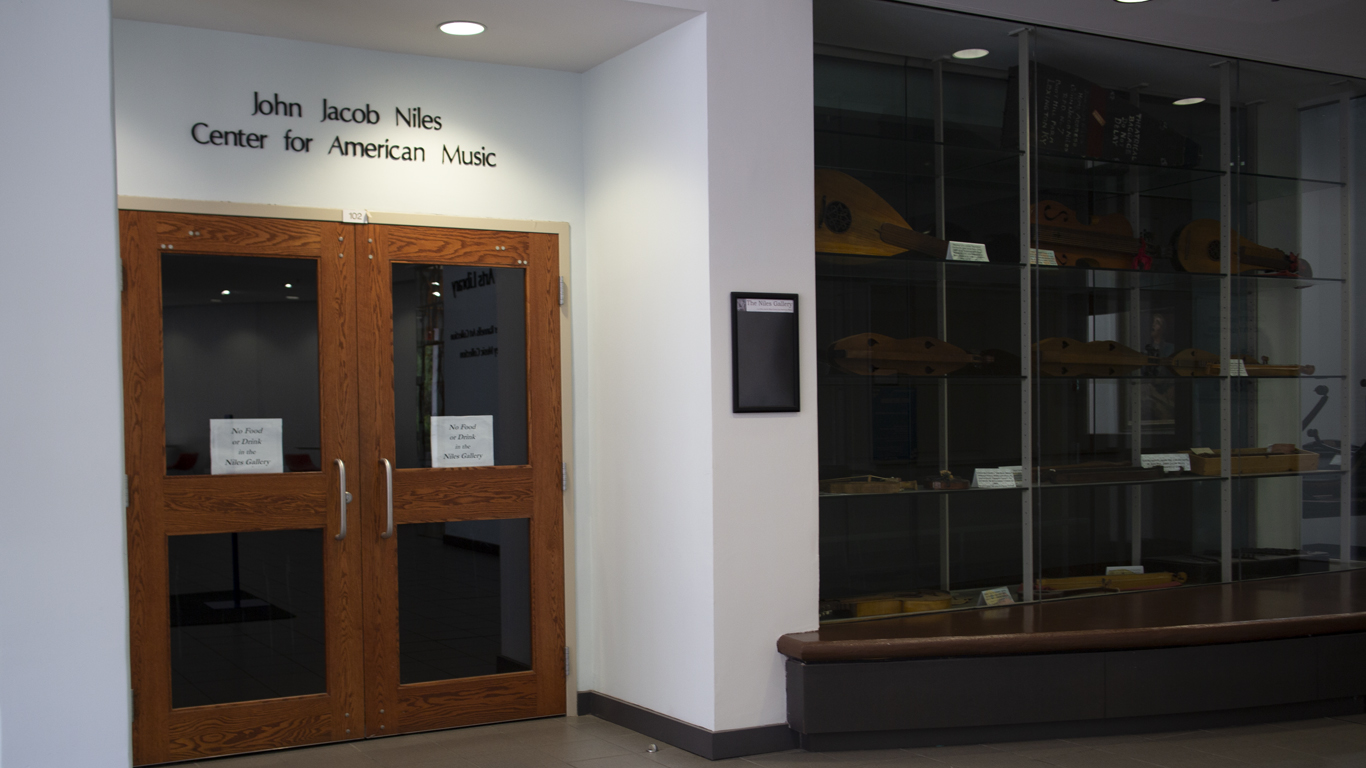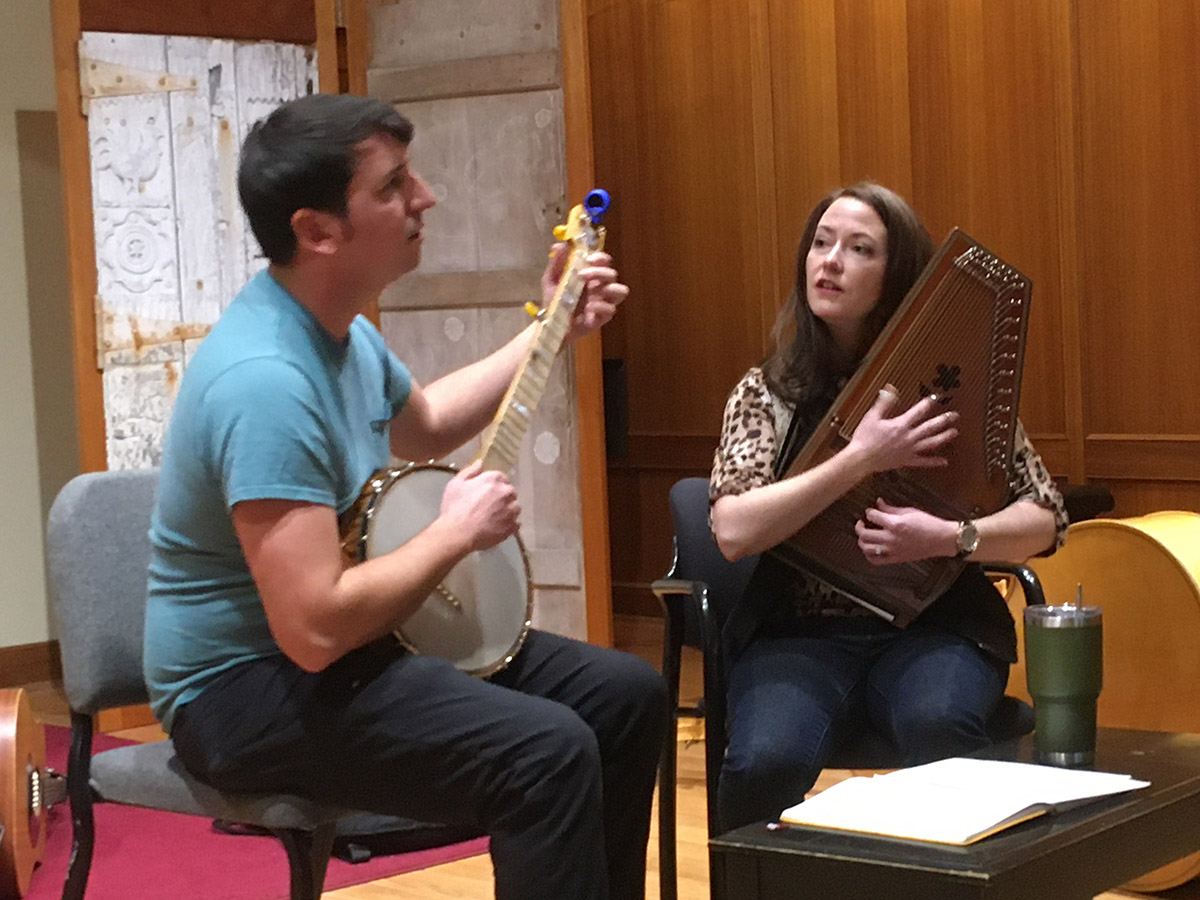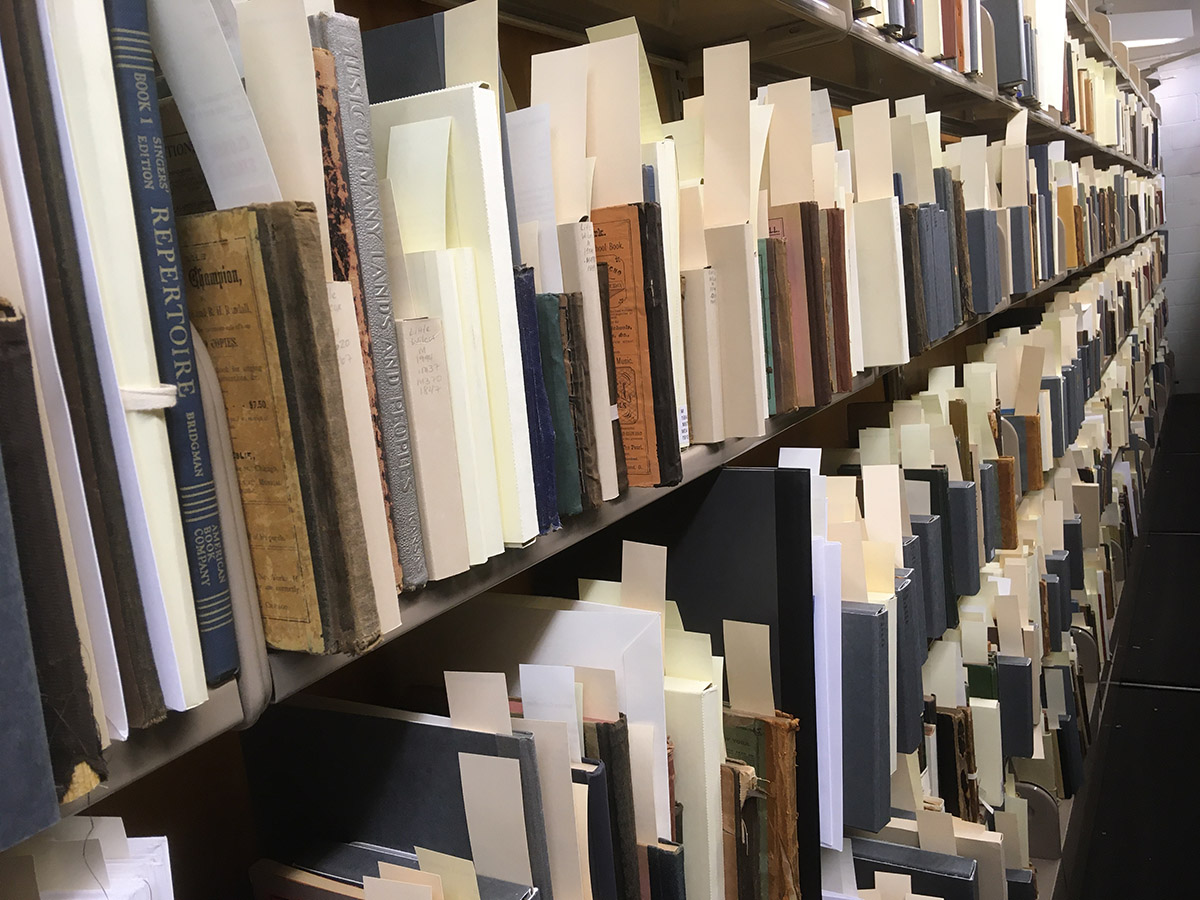The Niles Gallery is the heart of the John Jacob Niles Center for American Music. Located off the lobby of the Lucille Caudill Little Fine Arts Library, the Gallery provides an elegant space for lectures, colloquia, readings, recitals, and other small musical events.
The John Jacob Niles Center for American Music is a collaborative effort of the University of Kentucky School of Music, the College of Fine Arts, the Appalachian Studies Program, and the University Libraries. It is named for Kentucky folklorist and composer John Jacob Niles whose family provided a generous gift to help establish the Center and its collections. The Center provides a focal point for the research and performance of American music, from the early Colonial period through the present, with special emphasis on the culture of the southern Appalachian region. The Niles Center serves as a repository for primary and secondary research materials, and actively supports the development and dissemination of scholarly research in American Music. The Niles Center also hosts guest lectures by leading scholars in American music studies, as well as numerous concerts and recitals in the Niles Gallery, including the Appalachia in the Bluegrass noon concert series every Fall semester.
Dr. Ron Pen, formally established The Center in 1997 and it moved into its dedicated space at the Lucille C. Little Fine Arts Library in 2000. The Niles Center’s programmatic and archival activities are funded primarily through three endowments: the Keith B. MacAdam Endowment for American Music, the American Music Library Acquisition Endowment, and the “Our American Music” Endowment. The Center consists of the Niles Gallery, a 50-seat performance and lecture space, a “Green Room” with a small listening and reading library used as a support space for the Gallery, and the Niles Study Room, which provides an attractive space for private research using collections of the Niles Center. The Director of the Niles Center, Dr. James Revell Carr, maintains an office adjacent to the Green Room and accessible to the Gallery. The Rare Book storage facility of the Little Library adjoins the Director’s Office and is used for Little Library special items as well as various Niles Center archives.



